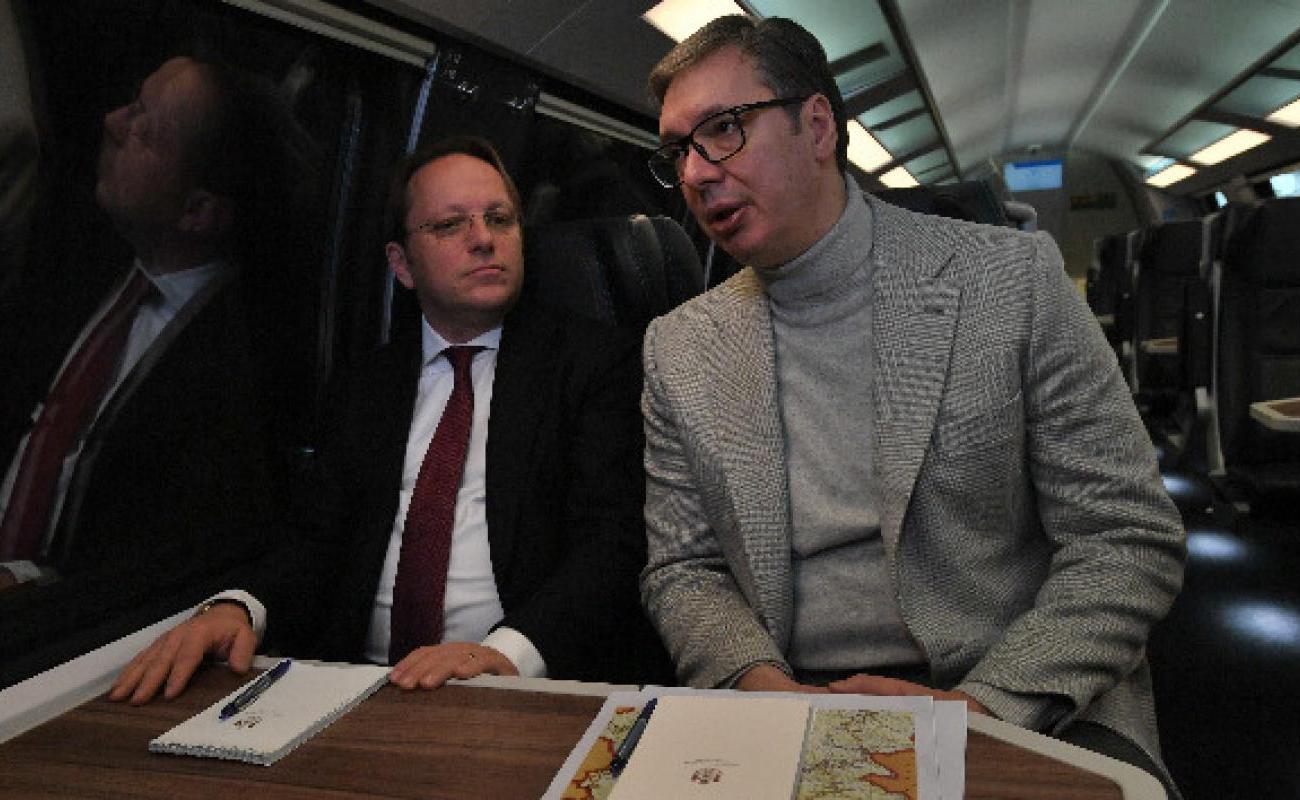EBRD, EU and EIB support high-speed rail in Serbia with €2.2 billion

- EBRD loan of €550 million to finance upgrade of Belgrade-Nis rail line
- Largest EBRD loan for a single project in Serbia to date
- €2.2 billion project to help improve safety and efficiency of Serbia’s rail transport
The European Bank for Reconstruction and Development (EBRD), the European Union (EU) and the European Investment Bank (EIB) are joining forces to support Serbia’s large-scale modernisation of the rail link connecting Belgrade to the country’s second-largest city, Niš.
The three organisations are providing a €2.2 billion financing package to Serbia for a much-needed upgrade of the strategic rail link, which forms part of the Pan-European Corridor X railway axis. The package includes a €550 million EBRD loan, the largest EBRD loan to Serbia to date. It also includes a €1.1 billion loan from the EIB, and an investment grant of around €598 million from the EU, the largest EU grant for a single project in Serbia to date. The EU has already approved €265 million worth of grants and the first tranche, amounting to €82.8 million, was signed at an event held today on a symbolic train ride from Belgrade’s main train station to Ripanj.
EU Commissioner Oliver Várhelyi and the President of Serbia Aleksandar Vučić witnessed the signing and presented the financial package together with representatives of the government of Serbia, the EBRD and the EIB.
The proceeds will finance substantial modernisation of the 230 km railway section connecting Belgrade to Niš, including the construction of new bridges and tunnels. The upgrade will enable travel speeds of up to 200 km per hour and decrease total travel time between Belgrade and Niš from the current six hours to one hour and 40 minutes.
The improved rail link will also support Serbia's economic development, contribute to its local and regional connectivity and integration, and enhance the competitiveness of rail transport, especially for international and transit freight traffic.
The investment will help promote a modal shift from cars to trains, a greener and safer mode of transport.
Matteo Colangeli, EBRD Director for the Western Balkans, said: “Modernising rail infrastructure and making rail transport safer and more efficient is one of our priorities in the Western Balkans and a key enabler for the region’s economic development. We have a longstanding commitment to the Serbian rail sector and we are pleased to team up with the European Union and the EIB on this landmark project.”
Olivér Várhelyi, EU Commissioner for Neighbourhood and Enlargement, commented: “We have picked this project because this project is capable of changing the realities on the ground for the people of Serbia, for the people of southern Serbia, and with that, also for the entire region. Because this train should bring growth and jobs, this train should bring investments in areas where it is most needed – in the south of Serbia – but this should also bring a new Serbia and a new region.
The President of the Republic of Serbia, Aleksandar Vučić stated: "We are receiving €610 million as a gift, out of a total of €2.7 billion. The biggest aid, the biggest support, the biggest amount of money. When we do this, Niš will be an hour and 40 minutes away from Belgrade, and right now you cannot get there by car in less than two and a half hours. When the railway was built in 1884, it took eight hours to travel, now it takes six and a half. Nothing has changed in 130 years. Now we are changing Serbia, with the help of the European Union."
Lilyana Pavlova, EIB Vice-President, said: “As the Bank of the European Union, at the EIB, we are committed to provide support that is sustainable both for the environment and for our partners’ finances. That is why this partnership for the modernisation of Railway Corridor X is at the heart of EIB Global. Thanks to the blending of our funds, grants and technical assistance from the Western Balkans Investment Framework and the European Union’s Instrument for Pre-Accession, we have been able to bring this project off the ground faster and provide the most competitive financing offer.”
The EBRD has been one of the main financiers of Serbia’s rail sector, with more than €1 billion invested to date and ambitious plans to extend this support in future.
In addition to financing, the EBRD has provided technical assistance to help the Serbian rail sector strengthen corporate governance and increase rail transport safety. The bank will also help Serbia to upskill its rail sector workforce by developing new market-relevant dual-learning curricula, building on the EBRD’s wider policy dialogue efforts in Serbia.
Railway Corridor X is one of the pan-European corridors connecting central Europe with Thessaloniki in Greece. It is part of the EU’s Economic and Investment Plan for the Western Balkans. The plan is aimed at mobilising investments totalling up to €30 billion in the areas of transport, energy, and green and digital transition, to create sustainable growth and jobs.
